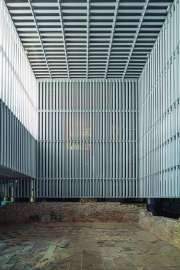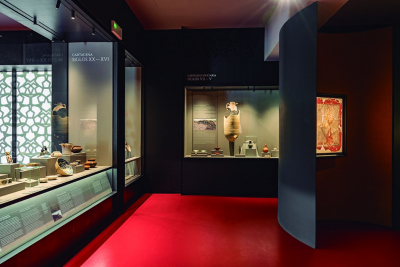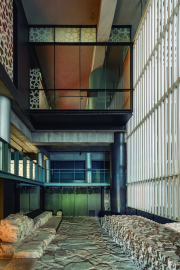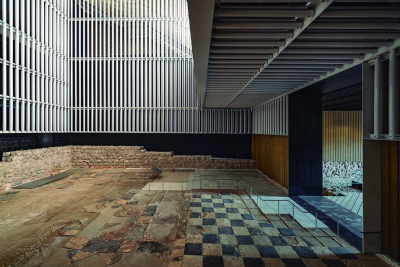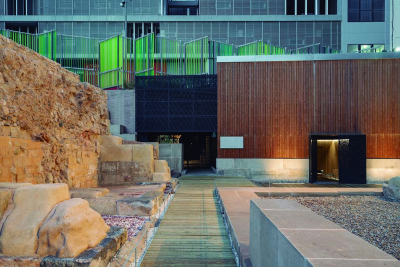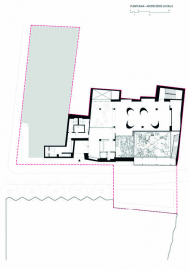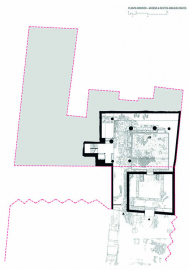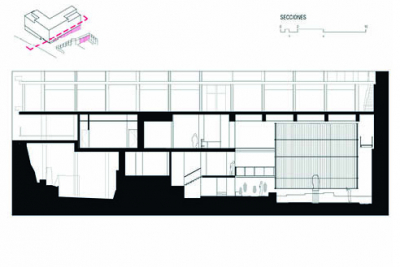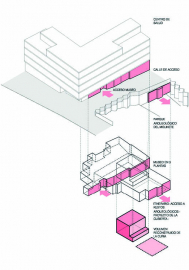El Molinete Archaeological Museum
The Molinete Museum is located on the ground floor of the Old Town health center. The space was designed so the structure did not substantially affect the remains of the Roman Curia, center of the museum. In 2020 the Molinete Museum opens its doors to public, showing more than 20 years of archeological research concerning the Roman remains of Cartago Nova.
The project marks the startpoint of a tour around Molinete Archaeological Park, who’s mission is the conservation of the exceptional archaeological excavation and the explanation of the Curia, the building that was the monumental nucleus of the ancient city. At the far end of the tour the excavation is protected by a folded roofscape.
The Museum stretches over the three lower floors of the Health Center. The ground floor contains the reception, visitor control, staff and technical rooms as well as an audiovisual space where fundamental pieces found in recent years are exhibited, such as the exceptionally preserved mural paintings of two Muses and an Apollo. On the intermediate floor are various exhibition and a small multipurpose room. On the lowest floor the Curia is volumetrically restored and is made accessible to visit as well as the connection to the Archaeological Park.
The excavation is the center of the intervention. Over the original floor and ruins of the curia an eight meter high space recovers the Curia's spatial footprint in all dimensions. The fundamental decision was to act based on a hybrid condition, therefore, ancient structures merge with contemporary architecture, distinguishable, but a single organism. A volumetric restitution made of steel and translucent plastic cylinders hangs from the ceiling of those eight meters, a canopy that allows to transparencies and visual connections but at the same time suggests the missing space.
This volume gives the character that the archaeological park demands, with absolute respect for the ancient work and a contemporary architecture that accompanies it to make it better. The result is a happy hybridization, modern architecture justified by the ancient ruins and ruins that grow, brave and optimistic, with the contemporary architecture.
Once again, memory and contemporary cultural context.
The materials used tries to solve the problems that the basement presented. The use of glass gives lightness and allows the natural light passing to the interior as much as it can. The epoxy floor, as well as the natural sisal fabrics and the perforated steel sheet gives the visitor distance from the stone roman world. The concrete ceiling and pillars of the existing building are shown as they are so their presence is removed. Colours are chosen by following ancient tones founded in the excavations. The temperature is kept at 19º Cº and the humidity at 65% which permits the best conservation of the historic pieces.

